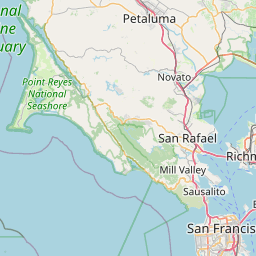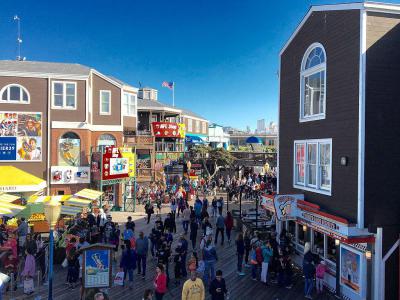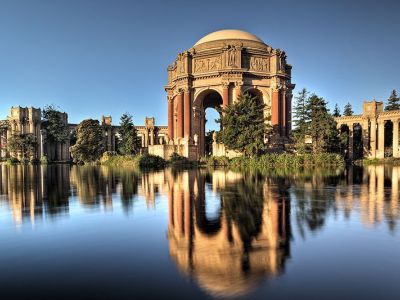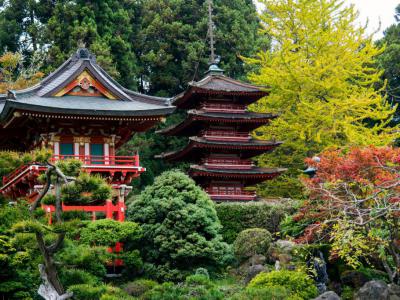Custom Walk in San Francisco, California by kay_gary_3c6db created on 2025-04-04






Guide Location: USA » San Francisco
Guide Type: Custom Walk
# of Sights: 4
Tour Duration: 5 Hour(s)
Travel Distance: 13.5 Km or 8.4 Miles
Share Key: 25E7K
Guide Type: Custom Walk
# of Sights: 4
Tour Duration: 5 Hour(s)
Travel Distance: 13.5 Km or 8.4 Miles
Share Key: 25E7K
How It Works
Please retrieve this walk in the GPSmyCity app. Once done, the app will guide you from one tour stop to the next as if you had a personal tour guide. If you created the walk on this website or come to the page via a link, please follow the instructions below to retrieve the walk in the app.
Retrieve This Walk in App
Step 1. Download the app "GPSmyCity: Walks in 1K+ Cities" on Apple App Store or Google Play Store.
Step 2. In the GPSmyCity app, download(or launch) the guide "San Francisco Map and Walking Tours".
Step 3. Tap the menu button located at upper right corner of the "Walks" screen and select "Retrieve custom walk". Enter the share key: 25E7K
1) City Hall (must see)
San Francisco's City Hall is a remarkable edifice that exudes magnificence and splendor within the city. It stands proudly as one of the most exceptional structures in the area, boasting the captivating beauty of a Beaux-Arts masterpiece. Renowned architect and designer Arthur Brown drew inspiration from Paris' iconic Dôme des Invalides ("House of Invalids") when creating this architectural gem.
Beyond its captivating design, City Hall holds a special place in history, having weathered numerous challenges and natural calamities. Its journey began in 1899, when the original City Hall, constructed over 27 years, finally opened its doors to the public. Tragically, a mere seven years later, the devastating earthquake of 1906 reduced the building to rubble. The current City Hall stands as a replacement for its predecessor.
This magnificent structure encountered another significant trial in 1989 when it suffered severe damage from a powerful seismic tremor. As a result, it became structurally unstable. In response, City Hall underwent an extensive ten-year renovation, not only restoring it to its former glory but also fortifying it against earthquakes. Today, it proudly holds the distinction of being the largest base-isolated building in the world.
Why You Should Visit:
Compared to other city halls across the country, this one is very classy!
As well, there's always something going in Civic Center Plaza.
Tip:
Be sure to take the free 1h tour led by a knowledgeable docent. Learn about the building's history and architecture.
Beyond its captivating design, City Hall holds a special place in history, having weathered numerous challenges and natural calamities. Its journey began in 1899, when the original City Hall, constructed over 27 years, finally opened its doors to the public. Tragically, a mere seven years later, the devastating earthquake of 1906 reduced the building to rubble. The current City Hall stands as a replacement for its predecessor.
This magnificent structure encountered another significant trial in 1989 when it suffered severe damage from a powerful seismic tremor. As a result, it became structurally unstable. In response, City Hall underwent an extensive ten-year renovation, not only restoring it to its former glory but also fortifying it against earthquakes. Today, it proudly holds the distinction of being the largest base-isolated building in the world.
Why You Should Visit:
Compared to other city halls across the country, this one is very classy!
As well, there's always something going in Civic Center Plaza.
Tip:
Be sure to take the free 1h tour led by a knowledgeable docent. Learn about the building's history and architecture.
2) Pier 39 (must see)
Pier 39, the focal point of Fisherman's Wharf, may not have the same fishing fleet that it once had (back at the turn of the 20th century), but it compensates it with carnival-like amusements and a two-story carousel (which is not quite visible from the street but sits closer towards the pier's end). Revitalized in the 1970s to resemble a quaint wooden fishing village, this pier draws thousands of tourists every day.
It is really more like a big outdoor shopping mall packed to the rim with stores, restaurants, and various attractions, like a video arcade, street shows, the Aquarium of the Bay, and virtual 3D rides. On the plus side, the visitor center offers luggage storage and free phone-charging stations.
Famous for seafood, Pier 39 is home to 14 full-service restaurants boasting some of the freshest and most delicious offerings. At Fog Harbor Fish House, you can get more than just classic waterfront favorites, such as oysters and cioppino fish stew; all seafood on the menu is locally-sourced and sustainable. Also, check out the floating Forbes Island restaurant for some freshly-caught fruits of the sea.
The top reason to visit the pier is to see the sea lions, San Francisco's favorite mascot. These marine mammals made themselves comfortable on this coveted waterfront real estate in 1989 and have been tanning on its wooden boat slips ever since. A little bit stinky, perhaps, they look quite happy and add a great deal of popularity to the place.
From this pier, you can also see Angel Island, Alcatraz, the Golden Gate, and the Bay bridges. Tickets for boat and ferry rides to different locations in the area are also sold here.
Tip:
Regardless of the season, it can get windy at times, so bringing along a jacket is always recommended.
It is really more like a big outdoor shopping mall packed to the rim with stores, restaurants, and various attractions, like a video arcade, street shows, the Aquarium of the Bay, and virtual 3D rides. On the plus side, the visitor center offers luggage storage and free phone-charging stations.
Famous for seafood, Pier 39 is home to 14 full-service restaurants boasting some of the freshest and most delicious offerings. At Fog Harbor Fish House, you can get more than just classic waterfront favorites, such as oysters and cioppino fish stew; all seafood on the menu is locally-sourced and sustainable. Also, check out the floating Forbes Island restaurant for some freshly-caught fruits of the sea.
The top reason to visit the pier is to see the sea lions, San Francisco's favorite mascot. These marine mammals made themselves comfortable on this coveted waterfront real estate in 1989 and have been tanning on its wooden boat slips ever since. A little bit stinky, perhaps, they look quite happy and add a great deal of popularity to the place.
From this pier, you can also see Angel Island, Alcatraz, the Golden Gate, and the Bay bridges. Tickets for boat and ferry rides to different locations in the area are also sold here.
Tip:
Regardless of the season, it can get windy at times, so bringing along a jacket is always recommended.
3) Palace of Fine Arts (must see)
The Palace of Fine Arts stands as an impressive edifice situated in San Francisco's Marina District, originally erected for the 1915 Panama–Pacific International Exposition to showcase magnificent works of art. Though the passing years have taken their toll, the structure underwent a complete reconstruction from 1964 to 1974, making it the sole surviving building from the historical exposition.
Embracing a small man-made lagoon, the Palace of Fine Arts features a sprawling 1,100 feet (0.34 kilometer) pergola encircling a central rotunda, gracefully positioned near the water's edge. The designers drew inspiration from European classical settings, where serene bodies of water mirrored the grand architecture, offering a tranquil vista to behold from afar.
Adorning the rotunda's entablature, Bruno Zimm's three repeating panels portray "The Struggle for the Beautiful," a tribute to Greek culture. Additionally, sculptor Ulric Ellerhusen contributed the statues of weeping women atop the colonnade, along with a sculpted frieze and allegorical figures representing Contemplation, Wonderment, and Meditation.
Underneath the rotunda's dome, one can find eight substantial insets that once showcased murals by Robert Reid. Four of these depicted the inception and birth of Art, its relationship with the Earth, its progression, and its acceptance by human intellect. The remaining insets celebrated California's four "golds," symbolizing poppies, citrus fruits, metallic gold, and wheat.
Designed to evoke the essence of ancient Roman ruins, the Palace of Fine Arts has become an iconic landmark of San Francisco. In the early months of 2009, extensive renovations were carried out, revitalizing the lagoons, and walkways, and ensuring the structure's seismic resilience.
Why You Should Visit:
Historic architectural structure in a sweet area for picnic lunch!
Worth checking out especially if you are into photography.
Tip:
Go inside and see the museum if it's open. There's no fee and you can walk across the street and check out the bay right afterwards.
Embracing a small man-made lagoon, the Palace of Fine Arts features a sprawling 1,100 feet (0.34 kilometer) pergola encircling a central rotunda, gracefully positioned near the water's edge. The designers drew inspiration from European classical settings, where serene bodies of water mirrored the grand architecture, offering a tranquil vista to behold from afar.
Adorning the rotunda's entablature, Bruno Zimm's three repeating panels portray "The Struggle for the Beautiful," a tribute to Greek culture. Additionally, sculptor Ulric Ellerhusen contributed the statues of weeping women atop the colonnade, along with a sculpted frieze and allegorical figures representing Contemplation, Wonderment, and Meditation.
Underneath the rotunda's dome, one can find eight substantial insets that once showcased murals by Robert Reid. Four of these depicted the inception and birth of Art, its relationship with the Earth, its progression, and its acceptance by human intellect. The remaining insets celebrated California's four "golds," symbolizing poppies, citrus fruits, metallic gold, and wheat.
Designed to evoke the essence of ancient Roman ruins, the Palace of Fine Arts has become an iconic landmark of San Francisco. In the early months of 2009, extensive renovations were carried out, revitalizing the lagoons, and walkways, and ensuring the structure's seismic resilience.
Why You Should Visit:
Historic architectural structure in a sweet area for picnic lunch!
Worth checking out especially if you are into photography.
Tip:
Go inside and see the museum if it's open. There's no fee and you can walk across the street and check out the bay right afterwards.
4) Japanese Tea Garden (must see)
The Japanese Tea Garden in San Francisco holds a significant place within Golden Gate Park, originally established during the 1894 California Midwinter International Exposition, a grand World's Fair. While many of its original attractions remain, the garden has changed throughout its history, shaping it into the captivating sanctuary it is today.
This cherished complex, sprawling across 3 acres, boasts a network of serene paths, enchanting ponds, and an inviting teahouse, all meticulously arranged in the traditional Japanese style. Embracing elements from Buddhist and Shinto beliefs, the garden features sculptures and structures, while water and rocks are thoughtfully integrated to create a calming ambiance that encourages a slower pace of life.
The Japanese Tea Garden was created by George Turner Marsh, an Australian. Skilled Japanese craftsmen aided him in bringing his vision to life. Makoto Hagiwara, a Japanese immigrant, and gardener, became the garden's manager. Under his care, the temporary village transformed into the permanent Japanese Tea Garden. From 1895 to 1925, Hagiwara expanded the garden with various plants, birds, and the renowned koi fish.
The Tea House at the Japanese Tea Garden is steeped in history, connected to the sacred Japanese Tea Ceremony dating back to 1203 AD. It has been rebuilt multiple times and continues to serve generations of visitors with whipped green tea, Matcha, and a variety of snacks. Today, it remains a symbol of tranquility and beauty within the garden's enchanting landscape.
As a place of revered ritual, the Japanese Tea Garden serves as a profound representation of Japanese culture and religious philosophy, expressed through the esteemed art forms of landscaping and architecture. The design of the garden reflects the influence of Japan's geographic location, emphasizing elements like isolation and the significance of water. Both Buddhist and Shinto influences are gracefully interwoven into the essence of the Japanese Tea Garden, creating a haven of serenity and spiritual connection.
This cherished complex, sprawling across 3 acres, boasts a network of serene paths, enchanting ponds, and an inviting teahouse, all meticulously arranged in the traditional Japanese style. Embracing elements from Buddhist and Shinto beliefs, the garden features sculptures and structures, while water and rocks are thoughtfully integrated to create a calming ambiance that encourages a slower pace of life.
The Japanese Tea Garden was created by George Turner Marsh, an Australian. Skilled Japanese craftsmen aided him in bringing his vision to life. Makoto Hagiwara, a Japanese immigrant, and gardener, became the garden's manager. Under his care, the temporary village transformed into the permanent Japanese Tea Garden. From 1895 to 1925, Hagiwara expanded the garden with various plants, birds, and the renowned koi fish.
The Tea House at the Japanese Tea Garden is steeped in history, connected to the sacred Japanese Tea Ceremony dating back to 1203 AD. It has been rebuilt multiple times and continues to serve generations of visitors with whipped green tea, Matcha, and a variety of snacks. Today, it remains a symbol of tranquility and beauty within the garden's enchanting landscape.
As a place of revered ritual, the Japanese Tea Garden serves as a profound representation of Japanese culture and religious philosophy, expressed through the esteemed art forms of landscaping and architecture. The design of the garden reflects the influence of Japan's geographic location, emphasizing elements like isolation and the significance of water. Both Buddhist and Shinto influences are gracefully interwoven into the essence of the Japanese Tea Garden, creating a haven of serenity and spiritual connection.




